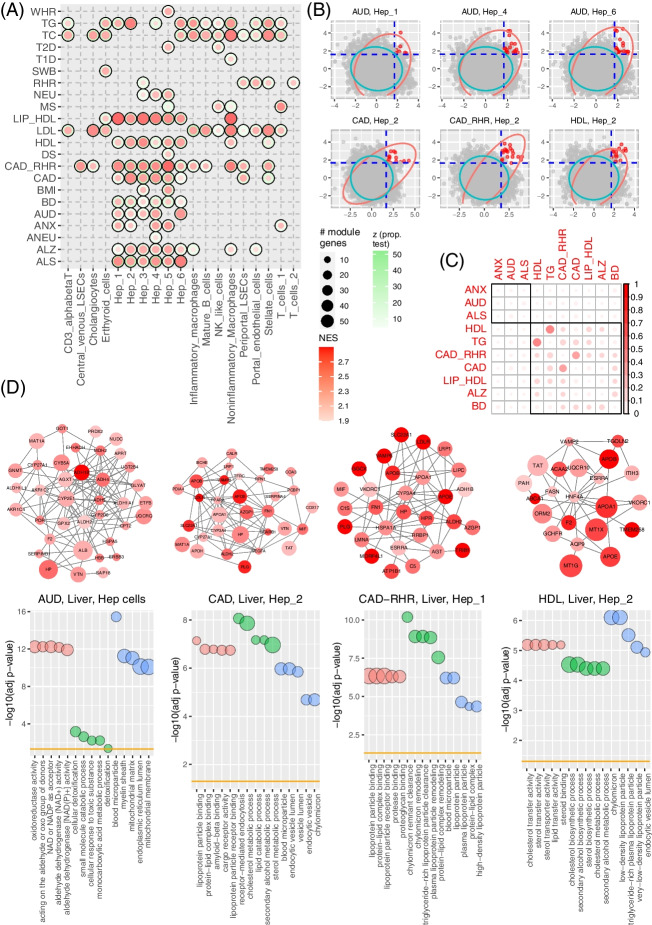Fig. 7.
Trait-cell type association using the liver panel. A Heatmap of the identified trait-cell type associations in the liver panel. B Distribution of module scores using selected trait and cell type pairs as examples. In each panel, the cyan circle indicates the 95% confidence interval (CI) estimated using the random modules and the red circle indicates the 95% CI estimated using the real modules. Significant modules are highlighted in red while all other modules, including non-significant modules from real data and all random modules from the virtual runs, are plotted as gray dots. C Trait-trait correlation based on shared module genes in the Hep_1 cell. The red dots are proportional to the Jaccard Index between any pair of traits using their module genes identified in Hep_1. D Demonstration of subnetworks for AUD, CAD, CAD-RHR, and HDL. Note that the AUD network was constructed using all genes identified in Hep cells and the networks for CAD, CAD-RHR, and HDL were constructed using genes identified in a specific Hep cell type. In all networks, node color is proportional to the corresponding GWAS signals and node size is proportional to the average gene expression in the corresponding Hep cells

